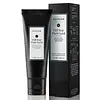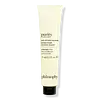What's inside
What's inside
 Key Ingredients
Key Ingredients

 Benefits
Benefits

 Concerns
Concerns

 Ingredients Side-by-side
Ingredients Side-by-side

Water
Skin ConditioningKaolin
AbrasiveButylene Glycol
HumectantGlycerin
HumectantBentonite
AbsorbentLactic Acid
BufferingDicaprylyl Carbonate
EmollientGlycolic Acid
BufferingCellulose Acetate
Cetearyl Olivate
1,2-Hexanediol
Skin ConditioningPotassium Hydroxide
BufferingSorbitan Olivate
EmulsifyingMaltodextrin
AbsorbentLipase
Skin ConditioningProtease
ExfoliatingBiosaccharide Gum-1
HumectantOryza Sativa Powder
Polyacrylate Crosspolymer-6
Emulsion StabilisingXanthan Gum
EmulsifyingGlyceryl Caprylate
EmollientGlyceryl Stearate
EmollientSodium Anisate
AntimicrobialSodium Levulinate
Skin ConditioningAcacia Senegal Gum
MaskingDisodium EDTA
Tocopherol
AntioxidantWater, Kaolin, Butylene Glycol, Glycerin, Bentonite, Lactic Acid, Dicaprylyl Carbonate, Glycolic Acid, Cellulose Acetate, Cetearyl Olivate, 1,2-Hexanediol, Potassium Hydroxide, Sorbitan Olivate, Maltodextrin, Lipase, Protease, Biosaccharide Gum-1, Oryza Sativa Powder, Polyacrylate Crosspolymer-6, Xanthan Gum, Glyceryl Caprylate, Glyceryl Stearate, Sodium Anisate, Sodium Levulinate, Acacia Senegal Gum, Disodium EDTA, Tocopherol
Water
Skin ConditioningKaolin
AbrasiveSolum Diatomeae
AbrasivePropanediol
SolventBentonite
AbsorbentDecyl Glucoside
CleansingAlcohol Denat.
AntimicrobialLauryl Glucoside
CleansingPropylene Glycol
HumectantPolysilicone-11
Pvp
Emulsion StabilisingXanthan Gum
EmulsifyingSalicylic Acid
MaskingSodium PCA
HumectantSodium Citrate
BufferingCitric Acid
BufferingParfum
MaskingChlorphenesin
AntimicrobialLinalool
PerfumingDisodium EDTA
Limonene
PerfumingLaureth-12
EmulsifyingPhenoxyethanol
PreservativeGeraniol
PerfumingVanillyl Butyl Ether
MaskingEthylhexylglycerin
Skin ConditioningCI 77891
Cosmetic ColorantWater, Kaolin, Solum Diatomeae, Propanediol, Bentonite, Decyl Glucoside, Alcohol Denat., Lauryl Glucoside, Propylene Glycol, Polysilicone-11, Pvp, Xanthan Gum, Salicylic Acid, Sodium PCA, Sodium Citrate, Citric Acid, Parfum, Chlorphenesin, Linalool, Disodium EDTA, Limonene, Laureth-12, Phenoxyethanol, Geraniol, Vanillyl Butyl Ether, Ethylhexylglycerin, CI 77891
Ingredients Explained
These ingredients are found in both products.
Ingredients higher up in an ingredient list are typically present in a larger amount.
Bentonite is an aluminium phyllosilicate clay with great absorbent properties. The name 'bentonite' comes from the area where the largest source is found: Fort Benton, Wyoming.
As a clay, bentonite is often used to absorb excess oil and provide exfoliation. It has also been shown to have some antibacterial and anti-inflammatory properties. Studies show bentonite was effective at calming dermatitis from poison ivy and in diaper dermatitis of infants. Bentonite has also been shown to act as a barrier against toxic compounds on your skin.
Sunscreens containing bentonite display higher water resistance and stay on the skin for much longer. The sunscreens containing bentonite also show higher potency and UV light absorbtion.
Bentonite is naturally created from volcanic ash and several natural weathering/hydrothermal processes.
A common usage of bentonite is removing excess protein from white wines. Bentonite contains a property of being able to absorb large amounts of protein from aqueous solutions.
Phyllosilicate clay has a structure formed by sheets.
Learn more about BentoniteDisodium EDTA plays a role in making products more stable by aiding other preservatives.
It is a chelating agent, meaning it neutralizes metal ions that may be found in a product.
Disodium EDTA is a salt of edetic acid and is found to be safe in cosmetic ingredients.
Learn more about Disodium EDTAKaolin is a clay. It is used for oil control and to help minimize pores. Like other clays, kaolin has the ability to absorb excess sebum or oil. This can help clean out pores and mattify the skin.
Some types of kaolin may have exfoliating properties. When water is added to kaolin, it becomes a paste with small abrasive particles.
Most kaolin is a white color, but may be pink/orange/red depending on where it comes from.
The name 'kaolin' comes from a Chinese village named 'Gaoling'. Kaolin clay comes from rocks rich in kaolinite. Kaolinite, the mineral, has a silicate layered structure. Kaolinite is formed from chemical weathering of aluminum siilicate minerals.
Besides skincare, kaolin is commonly used to make glossy paper, in ceramics, toothpaste, and as medicine to soothe stomach issues.
Learn more about KaolinWater. It's the most common cosmetic ingredient of all. You'll usually see it at the top of ingredient lists, meaning that it makes up the largest part of the product.
So why is it so popular? Water most often acts as a solvent - this means that it helps dissolve other ingredients into the formulation.
You'll also recognize water as that liquid we all need to stay alive. If you see this, drink a glass of water. Stay hydrated!
Learn more about WaterXanthan gum is used as a stabilizer and thickener within cosmetic products. It helps give products a sticky, thick feeling - preventing them from being too runny.
On the technical side of things, xanthan gum is a polysaccharide - a combination consisting of multiple sugar molecules bonded together.
Xanthan gum is a pretty common and great ingredient. It is a natural, non-toxic, non-irritating ingredient that is also commonly used in food products.
Learn more about Xanthan Gum